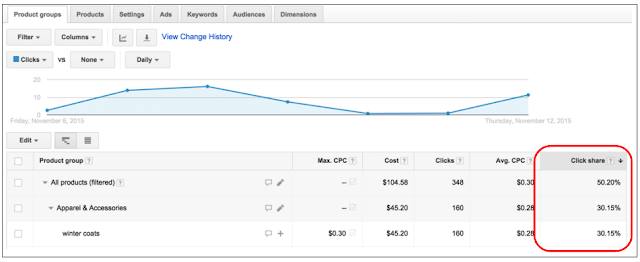This fall, shopping-related searches on mobile surpassed desktop, signaling a shift from shopping marathons to shopping moments.1 To help shoppers more easily discover, browse and buy on mobile this holiday season, we’ve redesigned Google Shopping to be incredibly fast, seamless, and intuitive.
Here’s a look at what’s new:
Helping shoppers narrow down options
Shoppers often don’t know the exact product they’re interested in — forty-percent of shopping searches are on broad terms — so they turn to search to discover and explore.2 With the new mobile redesign, if a shopper searches for droids, we’ll show the most commonly searched categories to help her narrow down her search. Similarly, if she searches on Google Shopping for tricycles for kids, we’ll show tricycles grouped by attributes that people commonly shop by: features, brand, and price. This gives her the freedom to discover what she might want in a more organized way, while helping drive more qualified traffic to your site.


Once a shopper’s narrowed down her options, she can now easily browse through lots and lots of products without having to load entirely new pages to see more. She can get a feel for a specific product, such as a Lego Starwars Turbo Tank, that she's interested in by tapping on the product, flipping through images, skimming reviews and scanning product info. She can easily swipe to the next product or dig deeper into specs, features, and even videos to learn more about what you offer.
 When she knows exactly what she wants, and searches for a chromecast, for example, we’ll surface more information upfront. She can see which merchants carry the product, which stores have it in-stock, and also get a quick glance at reviews and manufacturer details.
When she knows exactly what she wants, and searches for a chromecast, for example, we’ll surface more information upfront. She can see which merchants carry the product, which stores have it in-stock, and also get a quick glance at reviews and manufacturer details.
Driving shoppers In-store
Lastly, if she’s out and about it’s important for her to know what products are available nearby. One in four people who avoid stores do so because they don’t know if a product is in-stock.3 Now, if she searches for olaf toys near me or applies the available nearby filter, we’ll show a map of stores closest to her with the toy in-stock.
This new mobile experience makes it easier for shoppers to discover and explore products. To make sure they’re browsing and exploring your products, follow the tips in our Holiday Shopping Readiness and Holiday Shopping Survival guides.
Happy Holidays!
Posted by Karen Corby, Senior Product Manager, Google Shopping
1 Google Internal Data, shopping-related searches defined by those that trigger a Shopping ad, October 2015.
2 Google Data, anonymized, aggregated searches that trigger a Product Listing Ad, US, November, 2015.
3 Google, Ipsos MediaCT and Sterling Brands, Digital Impact on In-Store Shopping, Published on Think with Google, May 2014.
Here’s a look at what’s new:
Helping shoppers narrow down options
Shoppers often don’t know the exact product they’re interested in — forty-percent of shopping searches are on broad terms — so they turn to search to discover and explore.2 With the new mobile redesign, if a shopper searches for droids, we’ll show the most commonly searched categories to help her narrow down her search. Similarly, if she searches on Google Shopping for tricycles for kids, we’ll show tricycles grouped by attributes that people commonly shop by: features, brand, and price. This gives her the freedom to discover what she might want in a more organized way, while helping drive more qualified traffic to your site.
Browse by Scrolling and Swiping
Once a shopper’s narrowed down her options, she can now easily browse through lots and lots of products without having to load entirely new pages to see more. She can get a feel for a specific product, such as a Lego Starwars Turbo Tank, that she's interested in by tapping on the product, flipping through images, skimming reviews and scanning product info. She can easily swipe to the next product or dig deeper into specs, features, and even videos to learn more about what you offer.
Driving shoppers In-store
Lastly, if she’s out and about it’s important for her to know what products are available nearby. One in four people who avoid stores do so because they don’t know if a product is in-stock.3 Now, if she searches for olaf toys near me or applies the available nearby filter, we’ll show a map of stores closest to her with the toy in-stock.
This new mobile experience makes it easier for shoppers to discover and explore products. To make sure they’re browsing and exploring your products, follow the tips in our Holiday Shopping Readiness and Holiday Shopping Survival guides.
Happy Holidays!
Posted by Karen Corby, Senior Product Manager, Google Shopping
1 Google Internal Data, shopping-related searches defined by those that trigger a Shopping ad, October 2015.
2 Google Data, anonymized, aggregated searches that trigger a Product Listing Ad, US, November, 2015.
3 Google, Ipsos MediaCT and Sterling Brands, Digital Impact on In-Store Shopping, Published on Think with Google, May 2014.















